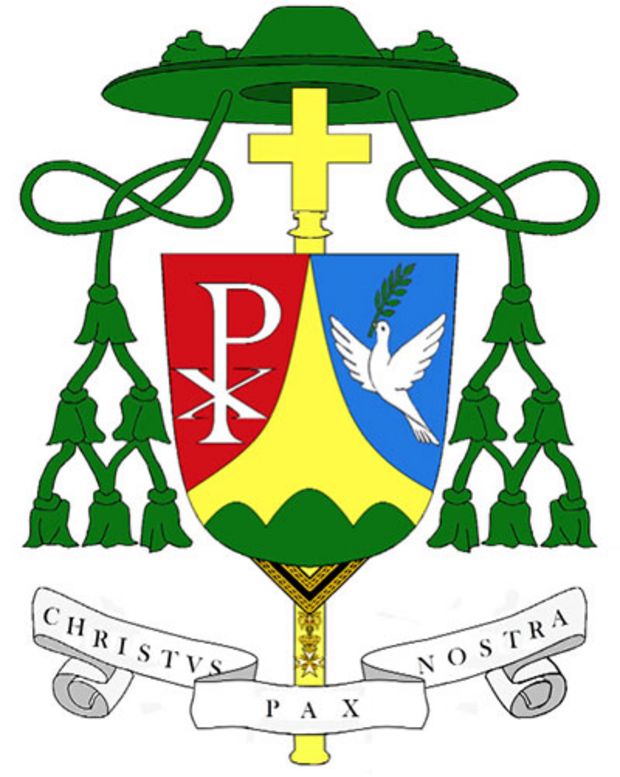Atypical Parkinsonian syndromes (APS) feature a heterogeneous group of progressive neurodegenerative diseases, to which multiple system atrophy (MSA), dementia with Lewy bodies (DLB), progressive supranuclear palsy (PSP) and corticobasal degeneration (CBD) are counted. Although they differ in their neuropathology, they have, as a common correlate, cellular inclusion bodies of misfolded proteins that lead to cell degeneration in the corresponding brain areas. These diseases, especially in the initial stage, can present symptoms phenotypically for Parkinson's disease. The differential diagnosis should question the diagnosis of idiopathic Parkinson's disease, if poor response to L-dopa, rapid progression and additionally warning symptoms occur. Despite the available additional diagnostic methods, an unambiguous diagnosis is often difficult and an appropriate course has to be awaited. Treatment options are currently limited only to symptomatic therapy, which is often less than satisfactory. Despite considerable milestones in this research area, there are currently no disease-modifying options; promising approaches with rasagiline (in MSA), rifampicin (in MSA), tideglusib (PSP) and davunetide (PSP) recently failed in clinical trials.
MSA
Definition: Multiple system atrophy (MSA) is a progressive, neurodegenerative disease, which may present clinically in the form of autonomous dysfunction, Parkinsonian syndrome, cerebellar symptoms or pyramidal tract signs. Depending on the clinical presentation, it is divided into two different subtypes. MSA-P shows predominating Parkinsonian symptoms and MSA-C is characterized by predominantly cerebellar symptoms. Due to the underlying pathology, alpha-synuclein deposits in oligodentroglia (glial cytoplasmic inclusions, GCI) of the affected areas in the brain with subsequent cell death, MSA is an α-synucleinopathy. [1]
Epidemiology: Epidemiological data show an incidence ranging from 0.6-0.7 per 100,000 inhabitants per year to a rising incidence of up to 3 per 100,000 inhabitants per year in patients over the age of 50. [2] The corresponding prevalence is 3.4-4.9 per 100,000 inhabitants, which also increases with age to 7.8 per 100,000 inhabitants. [3] The average age of onset is around 45.-55 years of age and both sexes appear to be affected equally. [4]
Clinical diagnosis: Motor presentation is characterized by Parkinsonian syndrome with bradykinesia, rigidity and postural instability. Furthermore, irregular postural and action tremor ("jerky tremor") might be noticed. [5] Overall, patients benefit only limited by L-dopa therapy. Cerebellar symptoms typically manifest in the form of gait impairment and extremity ataxia, as well as oculomotor dysfunction. In addition, hyperreflexia and a positive Babinski sign may be part of the clinical findings. [5] In addition to motor dysfunction, autonomic symptoms (orthostatic hypotension, urogenital symptoms) impact on quality of life in MSA sometimes preceding the motor symptoms. The clinical diagnosis is based on the consensus criteria [6] and their update [7] including the presence of autonomic dysfunction (urge incontinence or severe orthostatic hypotension) in combination with a Parkinsonian syndrome with poor L-dopa response or a cerebellar syndrome.
Ancillary investigations/examinations: For further differentiation from other parkinsonian syndromes and Parkinson's disease, additional investigations should be performed. Conventional MRI (atrophy according to the clinical phenotype, signal changes accompanied by iron deposits) and a diffusion-weighted MRI (to differentiate MSA from PD and PSP) should be conducted. In addition FDG-PET shows a hypometabolism in the affected brain areas in patients with MSA. Cardiac 123I-MIBG SPECT shows a preserved postganglionic innervation in MSA in contrast to Parkinson's disease. For evaluation of autonomic dysfunction, urodynamic and a tilt table examination are often unavoidable.
Therapy: Currently no disease-modifying strategies are available and recommendations are often based on studies with a low level of evidence. For the treatment of motor symptoms, a dopaminergic therapy with L-dopa or dopamine agonists is recommended. An initial L-dopa response in a subgroup of MSA patients justifies this treatment decision. [8] In addition, therapy with amantadine can be considered, although controversial data exist. [9] There is currently no treatment strategy that can improve cerebellar symptoms.
Orthostatic hypotension is a major problem in MSA. In addition to non-pharmacological measures, a number of drugs are available, which increase peripheral resistance or lead to a volume expansion. Currently, however, only midodrine and etilephrine are approved in Europe. In addition, the evidence is mainly based on trials conducted in patients with different pathologies. For midodrine RCTs are available, which have demonstrated a positive effect and a good safety profile [10], [11], [12], [13], [14]. A similar level of evidence exists for droxidopa (L-threo dihydroxyphenylserine), a precursor of norepinephrine, [15], [16], [17], [18]. Currently it is only approved in Japan and the USA. All other available drugs such as fludrocortisone [19], [20] pyridostigmine [21], [22] etc. are prescribed in off-label use. Currently, further studies with droxidopa (NCT02071459) and pseudoephedrine water (NCT02149901) are performed. Urogenital symptoms such as incontinence, urinary retention and erectile dysfunction characterize the further course of the disease and lead to a significant impairment of the quality of life. For the treatment of neurogenic bladder disorder anticholinergic therapy is available, but side effects have to be taken into consideration. [23] Alternatively, botulinum toxin injections into the detrusor muscle can be attempted. For the treatment of urinary retention intermittent self-catheterization represents first line therapy. Erectile dysfunction in men is considered as an initial syndrome and can precede motor symptoms. An appropriate treatment option represents the use of phosphodiesterase-5 inhibitor sildenafil, but the exacerbation of orthostatic hypotension should be considered as a known side effect. [24] For symptomatic treatment of hypersalivation botulinum toxin injections in the salivary glands are recommended, which may achieve satisfactory symptomatic relief. [25] There are no controlled studies with regard to all other non-motor symptoms.
At present therapeutic options don’t exist that can stop or delay the disease. Trials with recombinant human growth factor, [26] minocycline, [27] riluzole, [28] lithium, [29] rifampicin [30] and rasagiline [31] failed in the past. Only intraarterial/intravenous mesenchymal stem cells showed, promising results as determined by clinical rating scales (UMSARS 1-4), glucose metabolism and MRI-related changes,. [32] Currently AFFITOPE® (active immunization; NCT02270489), intrathecal mesenchymal stem cell therapy (NCT02315027), EGCG (Inhibition of α-synuclein oligomerization; NCT02008721), AZD3241, (microglial modulator; NCT02388295) and intranasal insulin (NCT02064166) are studied in clinical trials.
Networks and support groups: European Multiple System Atrophy Study Group [33], RareConnect [34] The MSA Coalition [35],
LBD
Definition: Dementia with Lewy bodies (LBD) is a sporadic neurodegenerative disorder which is characterized by the appearance of cognitive dysfunction in combination with a Parkinsonian syndrome. Neuropathological findings are inclusion bodies, so-called Lewy bodies (Lewy bodies, LB), in the perishing neurons of the substantia nigra and the neocortex. [36]
Epidemiology: The incidence of LBD is 3.5 per 100,000 inhabitants per year and rises with increasing age. In LBD more men than women seem to be affected [37]. The estimated prevalence in the general population is 0-5% [38].
Clinical diagnosis: LBD is characterized by a Parkinsonian syndrome, which occurs in combination with recurrent visual hallucinations, cognitive fluctuations and REM sleep behaviour disorder [39]. Since the clinical presentations of LBD and Parkinson's disease overlap, the occurrence of cognitive dysfunction within one year of development of motor symptoms or cognitive impairment prior to motor dysfunction, supports the diagnosis of LBD. The clinical diagnosis is based on the diagnosis criteria of McKeith et al 2005. Inclusion criteria are progressive cognitive impairment (attention, executive function, spatial-visual ability) in combination with one (possible) or two (probable) of the following symptoms: cognitive fluctuation, recurrent visual hallucinations and Parkinsonian syndrome. Features that support the diagnosis of LBD include, among others, recurrent falls, syncope, transient disturbance of consciousness and an increased sensitivity to antipsychotics. Additionally ischemic strokes and other neurological disorders with similar symptoms have to be excluded.
Ancillary investigations/ examinations: CSF analysis should be conducted to exclude Alzheimer`s disease. Furthermore, cerebral CT and/or MRI often show sparing of medial temporal lobe in LBD. Finally, dopamine transporter SPECT of Dopa PET imaging are also helpful to discriminate between LBD and Alzheimer`s disease showing striatal dopaminergic denervation in the former [40] Additional investigations include 123I-MIBG cardiac scintigraphy revealing dysfunction of postganglionic, sympathetic neurons, and FDG-PET and SPECT showing occipital hypometabolism and hypoperfusion [40]. In addition, an EEG may be indicated showing prominent slow-wave activity with transient sharp waves temporal. [8]
Therapy: RCTs are currently scarce and neuroprotective strategies do not exist. Only symptomatic treatment options exist for motor dysfunction, cognitive impairment and psychiatric symptoms. Dopaminergic therapy with L-dopa may lead to a benefit, however, it is less pronounced than in Parkinson's disease. [41] Although, in a single open-label study no negative effects of L-dopa therapy on neuropsychiatric symptoms were reported in LBD patients, [42] [8] L-dopa should be prescribed at the lowest possible dose and dopamine agonists should be avoided due an elevated risk of psychosis and confusion. For the treatment of cognitive dysfunction, cholinesterase inhibitors are recommended. Nonetheless, due to lack of approval, they are applied in off-label-use. Additionally, cholinesterase inhibitors may have a positive effect on neuropsychiatric symptoms. Currently RCTs are available for rivastigmine, donepezil, galantamine and mementine. A recent meta-analysis showed positive effects on cognition and hallucinations for rivastigmine and donepezil. Further evaluation of the effect of donepezil is currently expected from two ongoing studies (NCT00776347, NCT01944436). Furthermore, galantamine also showed potentially positive on psychiatric and cognitive symptoms. Memantine is currently seen to have only a slight effect. For the treatment of psychiatric symptoms atypical antipsychotics may be considered additionally. Classic neuroleptics are contraindicated because of the risk of akinetic crisis. However, the risk of motor exacerbation must also be taken into account for atypical neuroleptics, but to a lesser extent. For clozapine the level of evidence is low and the effect of quetiapine and olanzapine is limited by the occurrence of side effects. [43] Therefore, treatment decisions must be made after a careful assessment of benefits and risks in each individual case.
Networks and support groups: German Alzheimer’s disease society e.V [44], Lewy Body Dementia Association [45], Lewy Body Society[46], Lewy Body Dementia Coping and support group Mayo Clinic [47]
PSP
Definition: Progressive supranuclear palsy (PSP; synonymously Steele-Richardson-Olszeski syndrome) is a progressive, neurodegenerative disease. The classical clinical presentation is characterized by a Parkinsonian syndrome, supranuclear gaze palsy and subcortical dementia. PSP is a tauopathy because neuropathological findings show hyperphosphorylated tau protein aggregates (globose tangle) in neurons of the basal ganglia and brainstem. [40]
Epidemiology: The disease occurs with an estimated prevalence of 1.3-4.9 per 100,000 inhabitants, [3], [48] and is characterized by a corresponding annual incidence of 5.3 per 100,000 population per year. [2]
Clinical diagnosis: The classic clinical presentation, the Richardson's syndrome (PSP-RS), is characterized by postural instability with tendency to fall backwards, a supranuclear ophthalmoplegia, a symmetrical, hypokinetic-rigid parkinsonian syndrome with generalized bradykinesia, rigidity and poor L-dopa response. In the further course of the disease PSP-RS is characterized by development of dysarthria, dysphagia and cognitive dysfunction. [49] Furthermore, non-specific symptoms such as autonomic dysfunction (mild orthostatic dysregulation, constipation, urinary dysfunction), tremor, dystonic movements as well as depression and dyssomnia may be part of the clinical findings. [50] In addition to the classic variant the following subtypes have been recognized according to their distinctive clinical presentation : PSP-P (PSP-parkinsonism syndrome), PSP-PAGF (Pure akinesia with gait freezing), PSP-CBS (PSP-corticobasal-syndrome) and PSP-PNFA (PSP with progressive non-fluent aphasia). [51] Despite their shortcomings the NINDS-SPSP consensus criteria are still used for clinical diagnosis. For clinical diagnosis specific clinical symptoms are needed and exclusion criteria have to be taken into consideration. For the clinical diagnosis of possible PSP the following symptoms are required: progressive disease, disease onset after 40 years of age, vertical supranuclear palsy or slow vertical saccades, presence of postural instability and falls within the first year of the disease. The combination of supranuclear vertical gaze palsy and severe postural instability with early falls is considered as probable PSP. A definitive diagnosis can only be made by neuropathological findings of tau-positive inclusions. [52]. Recently, novel consensus criteria have been defined and they are likely to replace the NINDS-SPSP criteria.
Therapy: Currently therapeutic options that can stop the disease are not available and recommendations for clinical practice are based on low evidence. Although PSP patients have a poor levodopa response, a subtype of patients initially profit from dopaminergic treatment [49]. Therefore, treatment with L-dopa is justified. In selected cases amantadine may be prescribed as an alternative which may improve gait disturbances, dysphagia and apathy. [50] In addition, for the treatment of blepharospasm and limb dystonia a botulinum toxin injection can be discussed. [54] The antidepressant amitriptyline seems to provide an additional slight improvement of motor symptoms in a small group of patients. [8] Gabapentin [55] failed to improve oculomotor symptoms and donepezil [56] did not improve cognitive dysfunction in 2 RCTs. Based on observational studies, rivastigmine seems to provide a greater benefit in terms of cognitive symptoms. [57] Currently a disease-modifying therapy does not exist. Neuroprotective substances such as riluzole, [28] davunetide, [58] lithium (NCT00703677), tideglusib, [59] valproic acid (NCT00385710) and rasagiline [60] failed to show positive effects in controlled trials. Only coenzyme Q10, at a dosage of 5 mg/ kg body weight, showed positive effects in a 6-week double-blind, placebo-controlled study in 21 PSP patients, and led to an improvement of motor functions, frontal dysfunction and energy metabolism in the brain. [61] In this regard, a recent study in 62 PSP patients has also shown sobering results. [62] Currently, further RCTs with TPI 287 (microtubule stabilizer; NCT02133846)., mesenchymal stem cell therapy (NCT01824121) [63] and antibodies against tau protein (C2N- 8E12, NCT02494024; BMS-986168, NCT02460094) are underway.
Networks and support groups: CurePSP[64], German PSP-society [65], Orphanet [66], Association FTLD[67]
CBD
Definition: Corticobasal degeneration (CBD) is a progressive, neurodegenerative disease that is characterized by a strongly asymmetric Parkinsonian syndrome. Furthermore, additional symptoms occur, which have a great heterogeneity and their phenotype may overlap with other disorders. Abnormal tau protein in neurons and glial cells (astrocytic plaques), which leads to cell degeneration, represent the neuropathological correlate [40].
Epidemiology: Due to the rarity of this disease and the difficulty of a definite ante mortem diagnosis, an exact assessment of the incidence and prevalence is difficult. Epidemiological studies based on available data from Russia and Japan, show an estimated incidence of less than 1/100000 inhabitants per year. [68], [69], [70] The prevalence in the United States is estimated at 13000-20000. [70] The age of onset is usually in the sixth decade. [71]
Clinical diagnosis: CBD is characterized by an insidious onset and fast progression. Cognitive dysfunction limiting the executive and visuospatial skills may occur early in the course of the disease. CBD patients with motor symptoms present with an asymmetrical Parkinsonian syndrome, dystonia, tremor, myoclonus and postural instability. Furthermore cortical dysfunction accompanied by apraxia, cortical sensory loss or "alien-limb" phenomenon may occur. The response to L-dopa is poor as expected in atypical Parkinsonism. [40] New diagnostic criteria were developed by Armstrong et al 2013 [72]. According to the clinical presentation four different phenotypes are defined: Possible and probable corticobasal syndrome (CBS), FBS (frontal behavioral-spatial syndrome), naPPA (nonfluent / agrammatic variant of primary progressive aphasia) and PSPS (progressive supranuclear palsy syndrome). Furthermore, for the diagnosis of possible or probable CBD, clinical presentation, disease duration, age of onset, family history and genetic mutations or haplotypes are taken into consideration.
Ancillary investigations/ examinations: Ancillary investigations should include CSF examination to exclude Alzheimer`s disease. Furthermore neuropsychological testing for evaluation of cognitive dysfunction is recommended. Although cerebral MRI initially is normal, MRI abnormalities including focal or asymmetric atrophy with a maximum around the parietofrontal cortex may be present in the course of the disease. Consistent with the MRI findings functional imaging (SPECT and PET) shows hypoperfusion/hypometabolism (focal/ asymmetrical), especially in the contralateral parietal-frontal cortex and basal ganglia. In addition, electrophysiology can be of diagnostic value. [8,53]
Therapy: Currently, no therapy is available that can stop the disease and symptomatic treatment based on a low level of evidence is limited. L-dopa should be prescribed for motor symptoms, although L-dopa response is usually poor. Dopamine agonists are not recommended as they do not improve symptoms. The use of benzodiazepines (clonazepam) [8] or anticonvulsants (valproic acid, Levetirazepam) [73] may be an option to improve myoclonus. Botulinum toxin A seems to have a benefit for dystonic posturing [40]. Supportive therapeutic approaches (physiotherapy, occupational therapy, speech therapy, palliative strategies) are important because of lacking drug options. Currently disease modifying strategies are not available. An open-label trial with lithium failed due to significant side effects (NCT00703677). Two RCTs with TPI 287 (NCT02133846) and Davunetide (NCT01056965) are currently conducted. However, the biggest limitation of these trials is the number of false-positive diagnosed patients as the diagnosis of CBD remains difficult
Networks and support groups: Association FTLD [74], AFTD [75], Cure PSP [76], FTD support group [77], CBD solutions [78].




